It’s officially summer! After the first wave of spring wildflowers, now there are an abundant number of summer wildflowers appearing. Here are 10 wildflowers to look for at Land Trust’s Preserves:
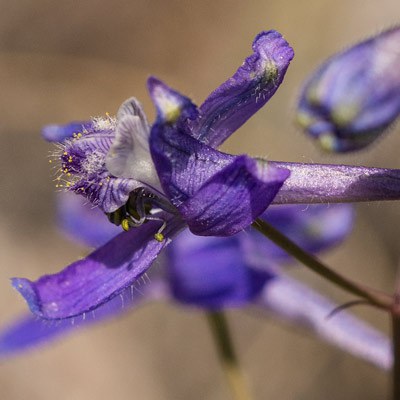
Distinctive purple flowers ¾-1 ¼” across with 5 sepals that look like petals. The uppermost petal has a long hollow spur that holds nectar. Cluster of 3-12 purple wildflowers on a slender stem 6-16” tall. Leaves are on the lowest part of the stem.
Blooms: Early Summer
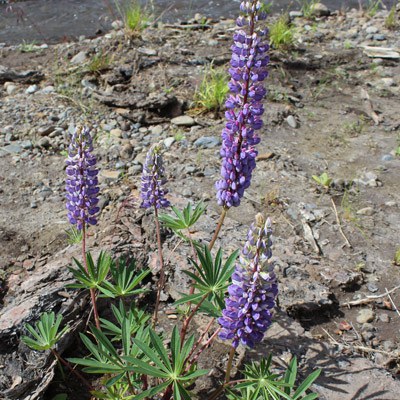
Blue, valender, pink, or white flowers with a white patch that often turns reddish with age. Bright green basal leaves with 5-11 leaflets 2-3” long. This lupine’s name comes from its many leaflets: poly means “many” and phyllus means “leaf.”
Blooms: Late Spring – Early Summer
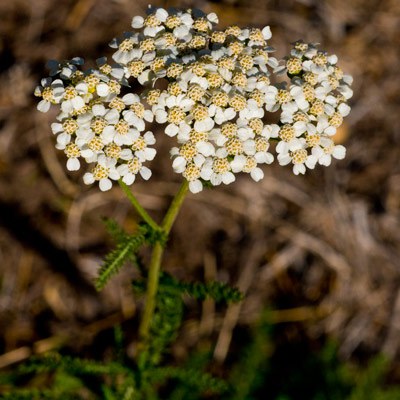
Flat-topped cluster of many flower heads, usually 5 rays each. Flowers can be same color or contrasting white, pink, and purple. Leaves are fernlike with a stem that is 1-2’ tall.
Blooms: All Summer
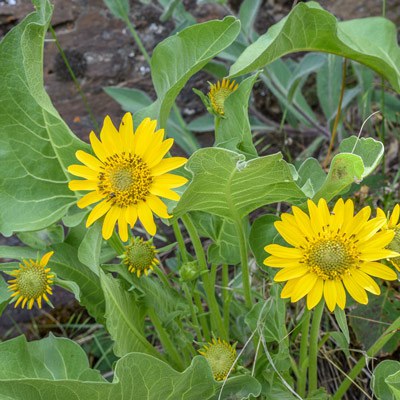
One of our showiest wildflowers, lighting up hillsides with sunny, disk-like faces. Grows in clumps with large widely triangular leaves that have heart-shaped bases. Yellow flowers are 2 ½-4” wide on 1-3’ stems.
Blooms: All Summer
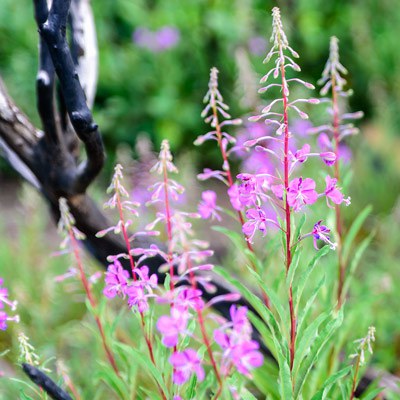
Dense spike of flowers facing outward. Deep pink to magenta petals are ¾-1” wide on 2-5’ stems. Stems are usually reddish with stiff hairs on the upper section. Grows in open and disturbed areas, especially recently burned lands.
Blooms: All Summer
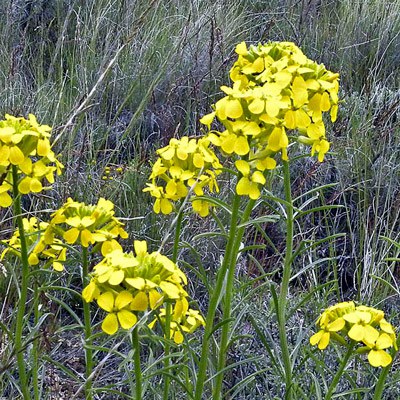
Orange to yellow flowers are clustered at the top of 2-4’ stem. Petals are spoon-shaped and narrow where attached. Flowers are often fragrant. Develops seedpods below flowers.
Blooms: All Summer
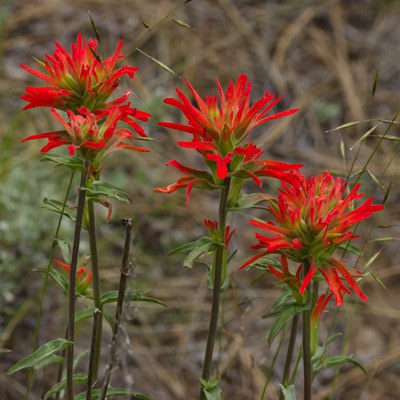
Clump of erect stems with bristly gray-green to purple-red leaves. Tubuluar flowers are bright red to orange-red and usually fuzzy with a thin coat of white hairs. Also has three-lobed brightly colored bracts (modified leaves) that surround the “real” flowers.
Blooms: Midsummer
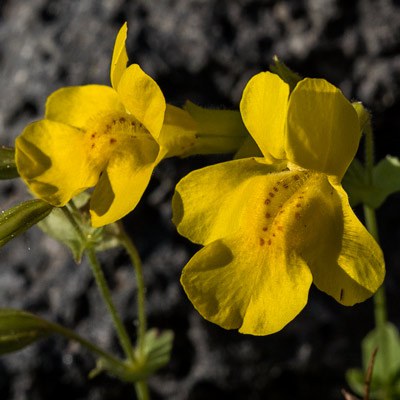
Flower stalks ¼-3” long, usually with 5 or more yellow flowers near the top. Lower flower lobes have red dots in throat area with smaller upper lobes. Grows in wet places. The flower species is currently being heavily studied to understand evolution and ecology.
Blooms: All Summer
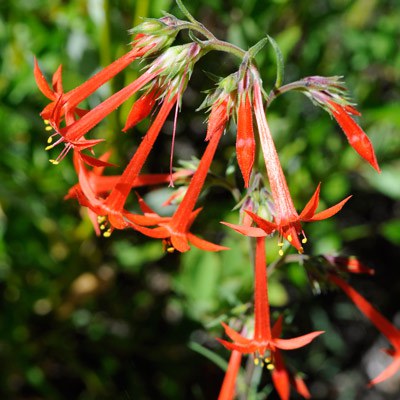
Trumpet-shaped, bright red flowers on stems up to 3’ tall. Flower color may vary from scarlet speckled with white, to pale pink speckled with red. Grows in dry soil in woodland openings and meadows.
Blooms: Midsummer
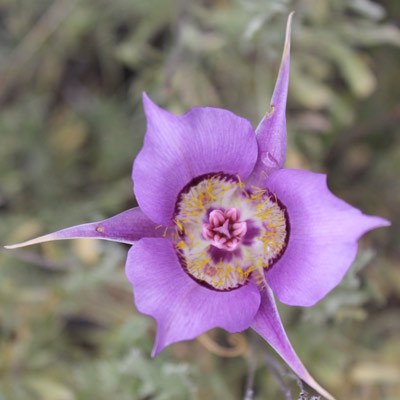
A sagebrush jewel that blooms intensely lavender on tall 8-23” stems. Mariposa is ‘butterfly’ in Spanish, and kalo and chortos are Greek for ‘beautiful’ and ‘grass.’
Blooms: Late Summer
*Please note that bloom times are approximate and related to weather conditions more than calendar dates.*
Learn more:


